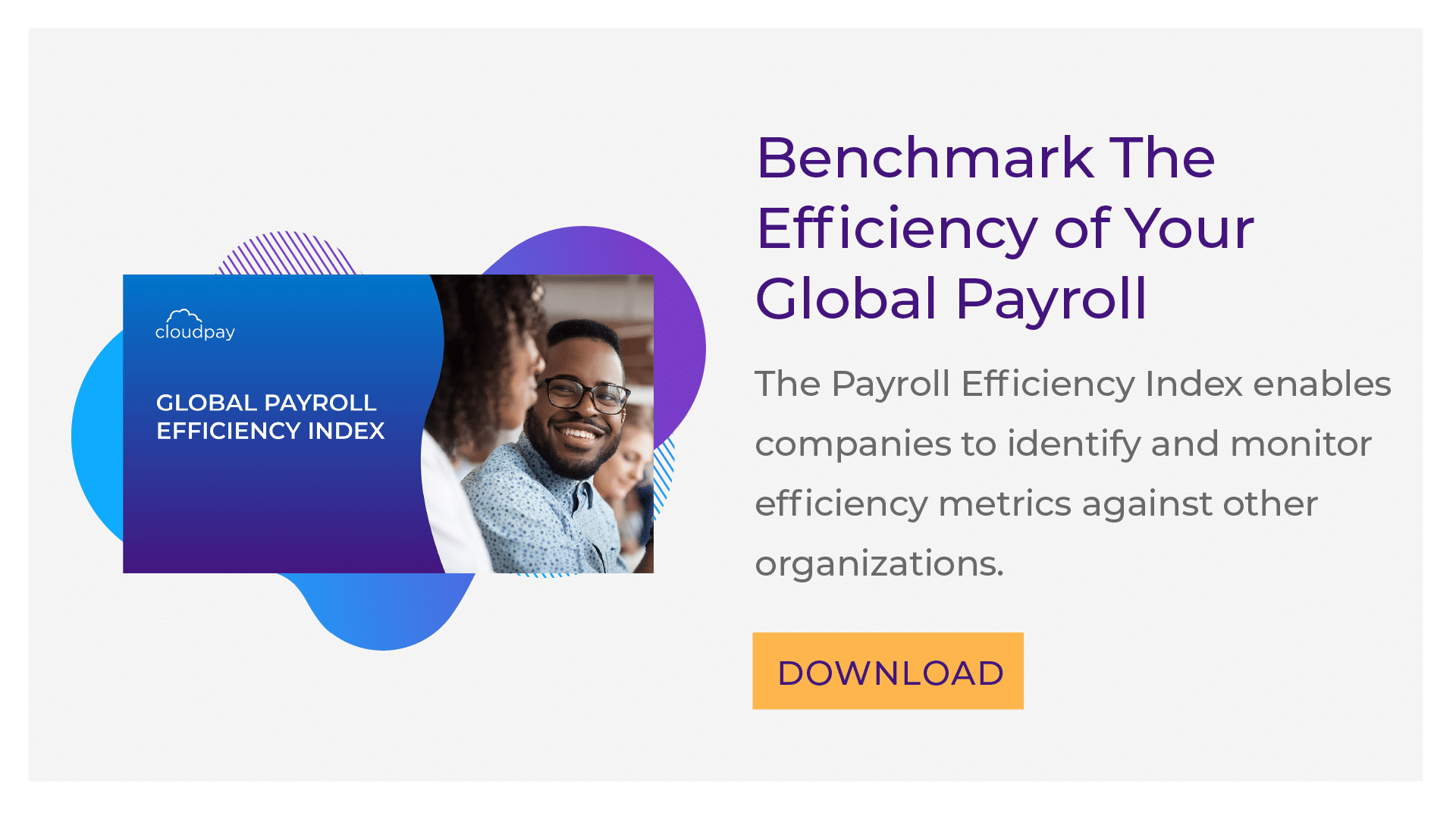Natalia Stolnaya | Senior Business Development Manager, CloudPay
Many different departments within businesses rely on analytics to gain vital insights every day. Those insights help them make the right decisions, make those decisions faster, and learn how to respond to customer and employee expectations. But somewhat surprisingly, within some organizations, the full potential of analytics still hasn’t reached payroll.
There is so much insight within data, and effectively analyzing and benchmarking it can transform how payroll teams operate. The insights generated can help them refine their operations, and allow them to make efficiency gains that contribute to improving overall business performance.
In this blog, we’ll take a look at why analytics is so important to payroll and the kinds of metrics payroll teams should be tracking and analyzing.
Why analytics is so important in payroll
Dig deep into the possibilities of analytics for payroll and it’s easy to see just how far its benefits can spread. At a time when workforces are more distributed and work is more flexible, payroll naturally has to become more agile and responsive, and analytics can help in these four areas in particular:
- Cutting out errors: analytics can uncover patterns in mistakes that are being made frequently, and what’s causing them. Errors like underpayments and overpayments can have a major effect on business operations and on employee experience, so finding out how to reduce these errors will have a significant impact on payroll operations.
- Real-time information: being able to analyze information and spot issues immediately means that those issues can be addressed before they can have any impact. For example, any inconsistencies in data or risks of inaccurate payment can be corrected within the payroll cycle and before the pay run is processed.
- Talent retention and acquisition: payroll data and analytics should combine with HR to bring together all of an employee’s data, and develop a full picture of their experience with the organization. Exploring and understanding different factors such as pay, length of service, level of benefits and so on, combined with their satisfaction levels, can help companies hold onto the best talent, and recruit the best candidates in the job market.
- Planning and forecasting: at a time of great change in the world of work, payroll teams need to be ready to respond to future challenges, such as rapid expansion or further moves towards flexible and remote work. Payroll analytics can inform senior management on how any major decisions will affect the business from a pay standpoint (for example, wider salary costs relating to tax and pensions), helping them get those decisions right.
What should payroll teams be tracking?
There are lots of different metrics that payroll teams can benchmark and analyze; which ones are most suitable will vary to a certain extent, depending on the characteristics of the business and the workforce.
The standard timeliness and accuracy KPIs are often prioritised, however these alone will give little insight into how payroll is operating and the source of errors if they occur. With that in mind, here are some often overlooked KPIs which should prove particularly beneficial to most organizations:
- First-time approvals: the percentage of payroll runs that are approved without any amendments. This can help indicate the efficiency of payroll and data input processes, and the effect of any changes that are made.
- Issues per 1000 payslips: the average number of payslips per 1000 containing errors. By using an actual number rather than a percentage, it can help all stakeholders understand the scale of any problems within the payroll system.
- Calendar length: the amount of time it takes to complete a payroll cycle end-to-end. This can be used as a direct measure of process efficiency, and the value of integrating technology and automation into payroll processing.
- Supplemental impact: the proportion of payroll runs that take place outside of the normal cycle. This can highlight the financial and administrative implications of any changes and corrections that need to be made, and whether off-cycle payments are holding payroll back.
- Training costs: the average total cost of training up a new hire, including instruction, equipment and expenses. This can help businesses quantify the return on investment of bringing in new employees and developing their skills.
How CloudPay supports payroll analytics
An effective global payroll solution will incorporate the analytics and benchmarking capabilities to exploit metrics such as those listed above. These capabilities were highlighted in the recent Everest Group PEAK Matrix report on Multi-Country Payroll, which explored how a number of solutions, including CloudPay, help support businesses making the most of payroll analytics.
The report stated that: “Enterprises are on the lookout for deeper people insights and operational benchmarks from their payroll systems. Through CloudPay’s analytics and reporting module, clients can generate reports based on custom fields and can benchmark across different cost centers internally and wider industry externally.”
At a time when data-driven insights are so important in every area of business, it ably demonstrates why the value of analytics for payroll can no longer be overlooked.
Learn more about CloudPay’s offering for Multi-Country Payroll, and how it can be used to maximize the potential of payroll analytics, by downloading the full Everest Group PEAK Matrix Report.




